nalco group
bone, muscle & joint pain physio
BOOK NOW / WHATSAPP ABOUT YOUR PAIN OR INJURY
- NOVENA 10 Sinaran Drive, Novena Medical Center #10-09, Singapore 307506
- TAMPINES 9 Tampines Grande #01-20 Singapore 528735
- SERANGOON 265 Serangoon Central Drive #04-269 Singapore 550265
Home > Blog > Physiotherapy > Conditions > Shoulder Pain > Collar Bone Pain Physiotherapy > Clavicle Fracture Physiotherapy
Clavicle Fracture Physiotherapy
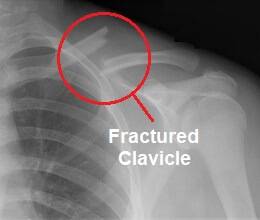
A clavicle fracture (or broken collar bone) is a common injury usually caused by
- sustaining a fall
- a direct blow or
- a car accident
Frankly, broken collarbones are most common in children in young adults.
The collar bone
is the most commonly fractured bone in the body. Whilst clavicular fractures may be
very painful, yet they are rarely serious and in most cases, they are
managed conservatively with a sling rather than requiring corrective surgery.
Clavicle fractures are the most common cause of collar bone pain.
Here we will
- look at the common causes and symptoms of clavicle fractures
- how they are diagnosed and treated
- how to make the best recovery and
- common problem associated with a broken collarbone
Anatomy
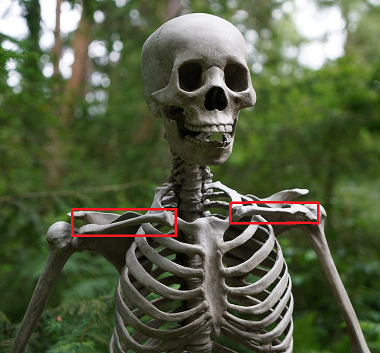
Our clavicle, and often commonly called the collarbone, sits right in front of the shoulder joint.
It is a long, thin bone that sits in-front of the top of the ribcage and they connect the sternum (breastbone) to the acromion (front part of the scapula) forming two joints,
- the sternoclavicular and
- the acromioclavicular joints (AC joint)
It is slightly curved in shape, sort of like a stretched-out “S” and is supported/held in place by various ligaments and muscles. It helps to hold the shoulder blade in place, like a strut, so that the arm can hang freely, as well as protecting underlying nerves and blood vessels.
Our clavicle is the first bone to start growing during embryonic development (5-6 weeks gestation) and one of the last bones to finish growing, around the age of 21-25 years.
Common Causes of Clavicle Injuries
Clavicle fractures are most commonly caused by an injury or trauma such as
- a fall
- sports injuries or
- car accidents
They may be caused
by:
- A sideways fall: where you land on the outer side of the shoulder (this is the most common cause of clavicle/collar bone injuries)
- A fall: onto an outstretched arm
- A direct blow: to the clavicle
- During birth: particularly with breech babies
Broken collarbones are often caused by contact sports such as
- rugby
- football
- boxing/MMA
- wrestling
- ice hockey
- winter sports such as skiing and
snowboarding
- cycling (particularly mountain biking).
Children may fracture their collarbone when playing or falling out of bed.
Weakness in the collar bone from conditions such as
can also cause a clavicle fracture.
A broken collarbone is one of the most common acute (sudden) shoulder injuries and the most common fracture seen in children. It is less common in patients who are over the age of 20, but still accounts for 2-5% of adult fractures.
Symptoms Of A Broken Collar Bone
The most common symptoms of a clavicle fracture include:
- Noise: Clavicle fractures are often accompanied by a “snapping” (crack) or “grinding” noise
- Pain: there may be immediate sharp pain at the time of injury which gradually ease into a dull aching or throbbing pain. This pain usually increases with any movement of the arm or upper chest or with any pressure over the fracture area.
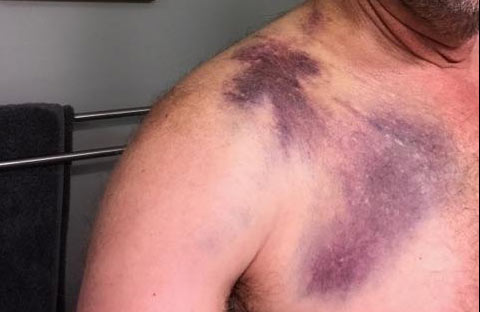
- Deformity: swelling and bruising may develop around the fracture site. The arm will often hang forwards and down compared to the uninjured (normal) side. There may be a small bulge/bump over the fracture site. In severe cases the bone may be so displaced that it punctures the skin and there may be associated bleeding but this is very rare.
- Numbness and/or Pins and Needles: if there is damage to the surrounding nerves , patients may experience some altered sensation such as numbness
- Decreased Movement: patients will find it difficult and painful to lift the arm.
The first sign of a broken collarbone in children may be them not using their arm normally if at all, so parents do watch out for this.
Diagnosing Clavicle Fractures
If you suspect that you or someone you know have a clavicle fracture, please immediately see your doctor immediately. If you're not sure you can contact us for an appointment and we can assess to determine and even refer you to our medical network of orthopedic doctors as well.
The treating doctor will ask questions about how you injured yourself. He or she will then examine your arm looking at the position and your arm movements as well as gently feeling along the length of the bone.
It's highly likely that you will be sent for an x-ray to determine the type of
fracture and to check for any associated damage. Of course note that diagnosis in children
may be done with an ultrasound rather than x-ray.
Clavicle Fracture Categories
Clavicle fractures can be classified into three groups, known as the
Allman Classification, depending on the location and severity of the
fracture:
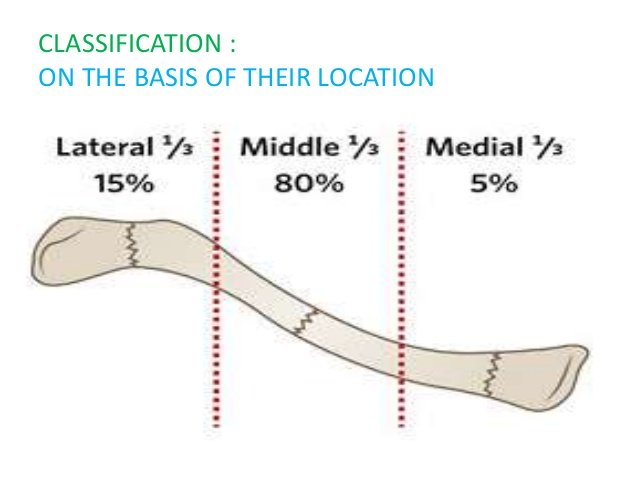
Group 1
Location of Fracture: middle third of the clavicle
Incidence:
This is the most common type pf collar bone / clavicle fracture, and it accounts for at least 80-85% of clavicle fractures in
both children and adults as this is the weakest part of the bone
Presentation:
If the fracture is displaced the outer (lateral) side of the clavicle
is usually pulled down due to the weight of the arm and the inner
(medial) side is usually pulled up by one of the surrounding muscles
(sternocleidomastoid).
Group 2
Location of Fracture: Outer (lateral) third of the collarbone – the side nearest the arm
Incidence: Accounts for 10-15% of clavicle fractures
Presentation: These fall in to three sub categories
- Type 1: non-displaced or with minimal displacement (i.e. the broken parts of the collarbone are lined up normally) as the ligaments remain intact
- Type 2: displaced - the inner (medial) part of the clavicle raises upwards due to damage to the surrounding ligaments
- Type 3: articular surface fractures - associated damage to the acromioclavicular joint where the collarbone meets the acromion (part of the scapula)
Group 3
Location of Fracture: Inner (medial) third of the collarbone – the side nearest the breastbone
Incidence: Rare – accounts for approximately 5% of clavicle fractures
Presentation: If displaced there may be associated injuries to the surrounding tissues
Treatment Options For A Broken Collarbone
In most cases, broken collar bones are treated conservatively which is without any surgery.
Only when there is more severe, unstable fractures, surgery may be indicated, but this is only needed in around 5-10% of clavicle fractures.
Non-Surgical Treatment
1) Protective Sling
The affected clavicle and arm will typically be protected and immobilised in a sling to hold the arm in place, giving the affected bone time and best healing position to heal by laying down new bone (ossification) to re-join the broken sections.
Either a simple triangle sling or a figure of eight sling (that wraps around both shoulders and the neck to hold the shoulders back) will be used.
You should keep using the sling until there is no pain when you move your arm. Initially you will need to wear it all the time (including at night), except when you are doing your exercises, but as it heals you will be able to wear it less and less (eventually you won't be needing to wear it any more, once the doctor does an x-ray and confirms good stable healing)
Children can usually
stop using their sling after around 3-5 weeks, adults will need it for
longer, usually around 4-8 weeks, depending on the severity of the collar bone clavicular fracture.
2) Medication
Pain relieving pain killers and anti-inflammatory medication can help following a
clavicle fracture. Your doctor will be prescribing them to you.
Cold therapy should be applied to the area as soon as possible after injury and used regularly for the first couple of weeks to help
4) Clavicle Physiotherapy
You will be referred for physiotherapy and encouraged to start gentle range of movement exercises almost immediately in order to minimize joint stiffness.
Typically you will start with gentle pendulum exercises for the shoulder and exercises for the elbow and hand, and then gradually progressing on to range of movement exercises as the fracture heals and pain allows.
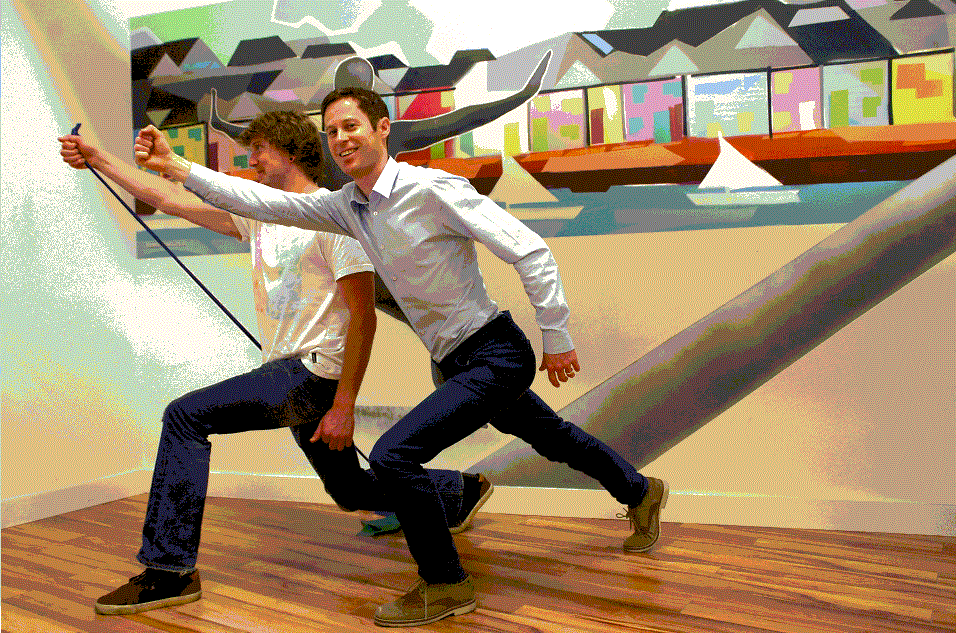
As the bone heals you will gradually progress on to strengthening exercises to regain full strength in the arm.
You definitely will
need to continue with physiotherapy until you have regained full range of
movement and strength – this usually takes up to three months.
Treatment In Newborns
If a baby has suffered a broken collarbone during delivery, treatment will usually consist of pain relief and careful handling of the baby.
Surgical interventions for collar bone fractures
Surgical treatment of broken collarbones is only necessary in 5-10% of cases.
Surgery is required if there is:
- Skin Penetration: the broken collarbone broke through the skin (this is known as an open fracture)
- Severe Displacement: when the two broken parts don’t line up
- Multiple Fractures: when the collarbone is broken into a few different fragments (2 or more fractured parts)
- Clavicle Shortening: that is more than 2 cm, caused by either overlapping of the bone fragments, or if the bone has shattered and moved
- Associated Damage: to surrounding nerves and/or blood vessels
- Non-Union: the fracture has failed to heal after around 3 months
If corrective surgery is required, your orthopedic surgeon will realign the bone fragments and fix them together with either:
1) Intramedullary Fixation
A nail or rod may be used to fix the bone together.
This goes
through the middle of the bone (known as the canal) to stabilize and secure the broken clavicle bone pieces
together.
2) A Metal Plate
A specially shaped metal plate, made of titanium or steel is placed over the top of the collarbone or occasionally around the front to hold the bones in the correct alignment.
It is fastened in place with screws.
Whichever method is used, you will normally be discharged home later that day or the following day (as long as medically stable). Typically, the metal work will be left in place indefinitely, but if it starts to causes a problem, such as
- pain
- stiffness
- irritates other structures or
- it shifts out of position
patients can opt for it can be removed once
the bone has fully healed.
Following surgery, the treatment will be similar to the non-surgical treatment above.
You will need to wear a sling for at least 3-4 weeks
and you will be given an exercise programme to follow by our senior physiotherapists to ensure you regain full movement and strength in your shoulder and clavicular joints.
Recovery Process
It usually takes 4-8 weeks in children and 6-12 weeks in adults for the fractured collar bone (clavicle) to fully heal.
It takes about 3-6 months in total to regain full function.
Most patients make a full recovery within three months, at which point it is safe to return to contact sports (but we're a little more conservative so we tend to recommend 4+ months to return to contact sports; of course this depends on the severity of the fracture and your physiotherapy compliance rate).
Healing may take longer if you smoke or suffer from diabetes.
Here is some advice on how to make the best recovery:
- Support:
Keep your arm well protected and supported in the sling the first few weeks except
for when you are doing your exercises.
Gradually wean yourself off the sling as the pain reduces, starting with short periods, but as soon as your arm feels sore, pop it right back into the sling.
Patients often report that other people tend to be more mindful and steer clear away from their slings and injured parts when it's more obvious. - Medication:
Use medication as directed by your doctor: this helps keeps pain and
swelling under control and will enable you to get going with your
exercises
- Exercises:
Follow the exercise plan given to you by our senior physical therapist and
keep going with it until you have regained full strength and movement –
don’t be tempted to stop too soon.
We aim to help you achieve 100% recovery (anything less than that is not acceptable to us because it'd hamper/limit your movements in all areas of your life, be it work, relationships, play etc). - Don't Forget The Uninjured Parts and Joints:
Start moving your fingers, hand and elbow as soon as possible to
prevent them from stiffening up in the sling.
Remove your arm from the sling to do this a few times a day - At Night / Sleeping Time: At night
prop yourself up with pillows to get yourself into a comfortable
position. You will need to wear your sling in bed initially.
Some people use pillows, some prefer our bed wedges - check and try and see which you prefer. - Really Limit And Restrict Range of Movement: Avoid
lifting your arm above should height for the first few weeks, until
your doctor or our senior physiotherapists gives you the go-ahead
- Limit/No Lifting: Avoid any heavy lifting: anything over 5lbs for at least 6-8 weeks
- Sports: Avoid contact sports at least 12-16 weeks - check in with your doctor or our senior physiotherapists first please before returning to them
- Posture: Be mindful and often think about your posture - avoid the temptation to let your shoulders drop forwards and your upper back to round
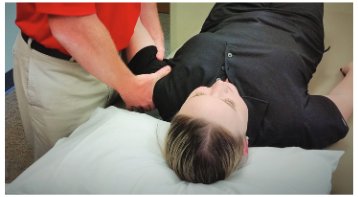
Possible Complications
Long-term problems following a clavicle fracture are rare with most people making a full recovery.
Non-Surgical Complications
-
Bony Prominence: you may feel and see a small lump over the fracture site. This will slowly shrink over months and years but in some cases may remain for long term.
- Non-Union: in 1-5% of of collar bone clavicle fracture cases the bone unfortunately does not join back. If there are no symptoms associated with this, no further treatment is indicated but if there are ongoing symptoms such as pain or reduced movement, corrective surgery may be required.
- Mal-union: in some rare cases, the broken bone may heal in a displaced (wrong) position which may lead to ongoing shoulder problems
- Decreased Shoulder Strength and/or Movement: The risk of this can be reduced by regular clavicle/shoulder physiotherapy with our senior physiotherapists. This is the most common condition affecting patients with shortening of the collarbone
Surgical Complications
Any surgery is associated with risks such as infection, bleeding, blood clots and damage to the surrounding nerves and/or blood vessels. Specific risks associated with surgery for a broken clavicle include:
- Implant problems:
in around 30% of cases the metal work may need to be removed due to
discomfort, or if it hinders specific structures inside or if it has loosened and shifted position. Occasionally,
the implant may also break.
- Injury to the Surrounding Tissues: in around 3% of cases there may be some damage to the surrounding blood vessels or nerves during surgery, leading to altered sensation and movement.
- Non-union: similar frequency to those treated non-surgically
- Frozen Shoulder: approximately 4% of surgical patients develop a frozen shoulder aka adhesive capsulitis after surgery for a clavicle fracture
